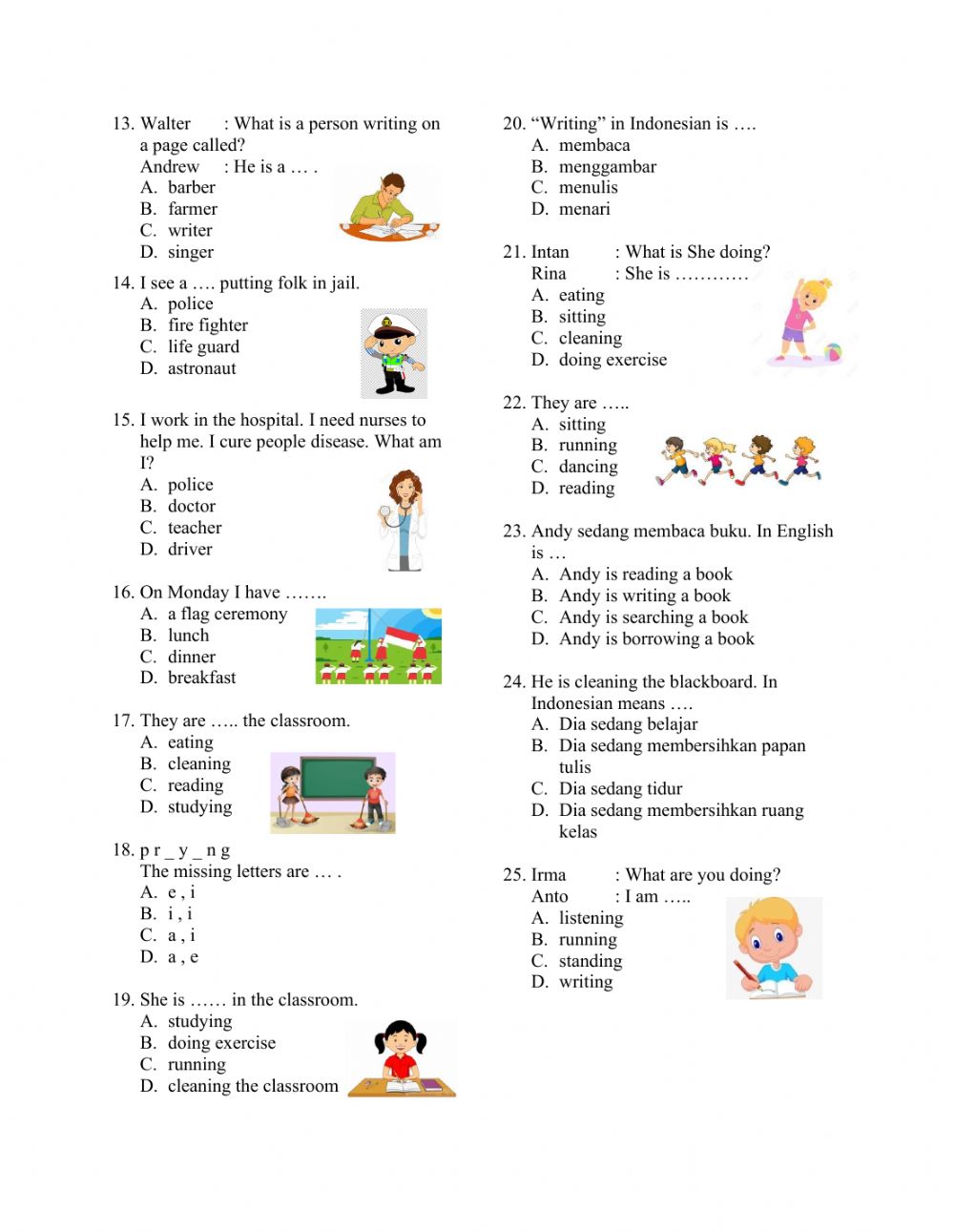Book Appointment Now

I. Introduction
A. Importance of English for Grade 3 Students
B. Scope of the Article
II. Vocabulary Section
A. Picture-Based Vocabulary (with examples)
B. Matching Vocabulary with Pictures (with examples)
C. Fill in the Blanks with Vocabulary Words (with examples)
III. Sentence Construction Section
A. Sentence Ordering (with examples)
B. Sentence Completion (with examples)
C. Making Simple Sentences (with examples)
IV. Comprehension Section
A. Simple Reading Comprehension (with examples)
B. Answering Questions Based on Pictures (with examples)
C. True or False Questions (with examples)
V. Conclusion
A. Recap of the Covered Topics
B. Importance of Continuous Practice
I. Introduction
Learning English at a young age provides numerous advantages for children. It opens doors to a wider world of knowledge, communication, and future opportunities. For Grade 3 students, mastering basic English vocabulary, sentence construction, and comprehension skills is crucial for their overall academic development. This article will provide examples of English questions suitable for Grade 3 students, covering vocabulary, sentence construction, and comprehension exercises. The questions are designed to be engaging and appropriate for their age and learning level.
II. Vocabulary Section
Vocabulary forms the foundation of language acquisition. Third graders need to learn and utilize new words effectively. Here are some examples of vocabulary exercises:
A. Picture-Based Vocabulary:
This exercise utilizes pictures to help students associate words with their visual representations.
Instructions: Write the name of each picture below.
(Insert pictures here: Examples – sun, tree, flower, bird, cat, dog, house, car)
Answer Key: Sun, Tree, Flower, Bird, Cat, Dog, House, Car
B. Matching Vocabulary with Pictures:
This exercise combines vocabulary recognition with visual association.
Instructions: Match the words in Column A with the correct pictures in Column B.
Column A: Column B:
- Apple (Insert picture of an apple)
- Banana (Insert picture of a banana)
- Orange (Insert picture of an orange)
- Grape (Insert picture of a grape)
Answer Key: 1- (apple picture), 2- (banana picture), 3- (orange picture), 4- (grape picture)
C. Fill in the Blanks with Vocabulary Words:
This exercise tests the students’ understanding and application of vocabulary in context.
Instructions: Fill in the blanks with the correct words from the box.
(Box: big, small, red, blue, happy, sad)
- The car is ___.
- The house is ___.
- The ball is ___.
- The girl is ___.
- The boy is ___ because he lost his toy.
- The sky is ___.
Answer Key: 1. big, 2. small, 3. red, 4. happy, 5. sad, 6. blue
III. Sentence Construction Section
Building correct and meaningful sentences is a key component of English language proficiency. The following exercises focus on sentence construction:
A. Sentence Ordering:
This exercise helps students understand sentence structure and word order.
Instructions: Arrange the words to make a correct sentence.
- is The sun shining.
- a He has new car.
- birds The singing are.
Answer Key: 1. The sun is shining. 2. He has a new car. 3. The birds are singing.
B. Sentence Completion:
This exercise tests the students’ ability to complete sentences with appropriate words.
Instructions: Complete the sentences.
- The cat is sitting ___ the mat.
- The children are playing ___ the park.
- She is eating ___ apple.
Answer Key: 1. on, 2. in, 3. an
C. Making Simple Sentences:
This exercise encourages students to construct simple sentences using given words.
Instructions: Make a simple sentence using these words: dog, big, brown.
Answer Key: The dog is big and brown. (Other variations are acceptable as long as they are grammatically correct.)
IV. Comprehension Section
Comprehension exercises assess a student’s ability to understand written or visual information.
A. Simple Reading Comprehension:
Instructions: Read the short passage and answer the questions.
The passage: The sun is shining. The birds are singing. A little girl is playing in the park. She is happy.
Questions:
- What is shining?
- What are the birds doing?
- Where is the girl playing?
- How is the girl feeling?
Answer Key: 1. The sun, 2. Singing, 3. In the park, 4. Happy
B. Answering Questions Based on Pictures:
(Insert a picture here: Example – a picture showing a boy reading a book in a library)
Instructions: Look at the picture and answer the questions.
- What is the boy doing?
- Where is the boy?
Answer Key: 1. Reading a book, 2. In a library
C. True or False Questions:
(Insert a picture here: Example – A picture showing a cat sleeping on a mat)
Instructions: Look at the picture and answer True or False.
- The cat is playing. (False)
- The cat is sleeping. (True)
- The cat is on a chair. (False)
V. Conclusion
This article provided a range of example English questions suitable for Grade 3 students. The exercises covered vocabulary building through various engaging methods, sentence construction focusing on word order and completion, and comprehension skills through reading passages, picture analysis, and true/false questions. Consistent practice and engaging learning activities are vital for building a strong foundation in English for young learners. Parents and educators should strive to make learning fun and interactive to maximize their understanding and enjoyment of the English language. Remember to adapt these examples to suit the specific needs and curriculum of your students.



